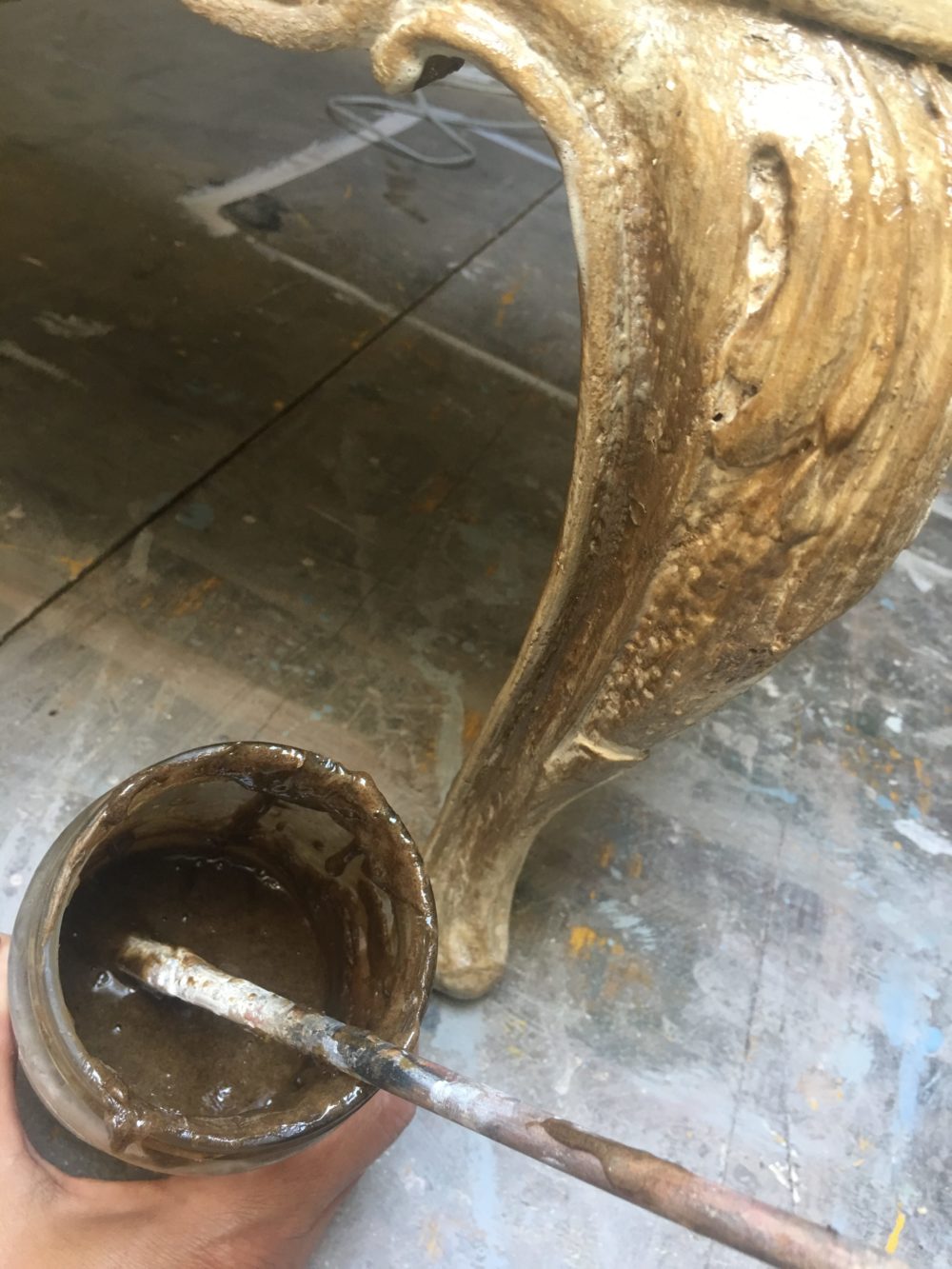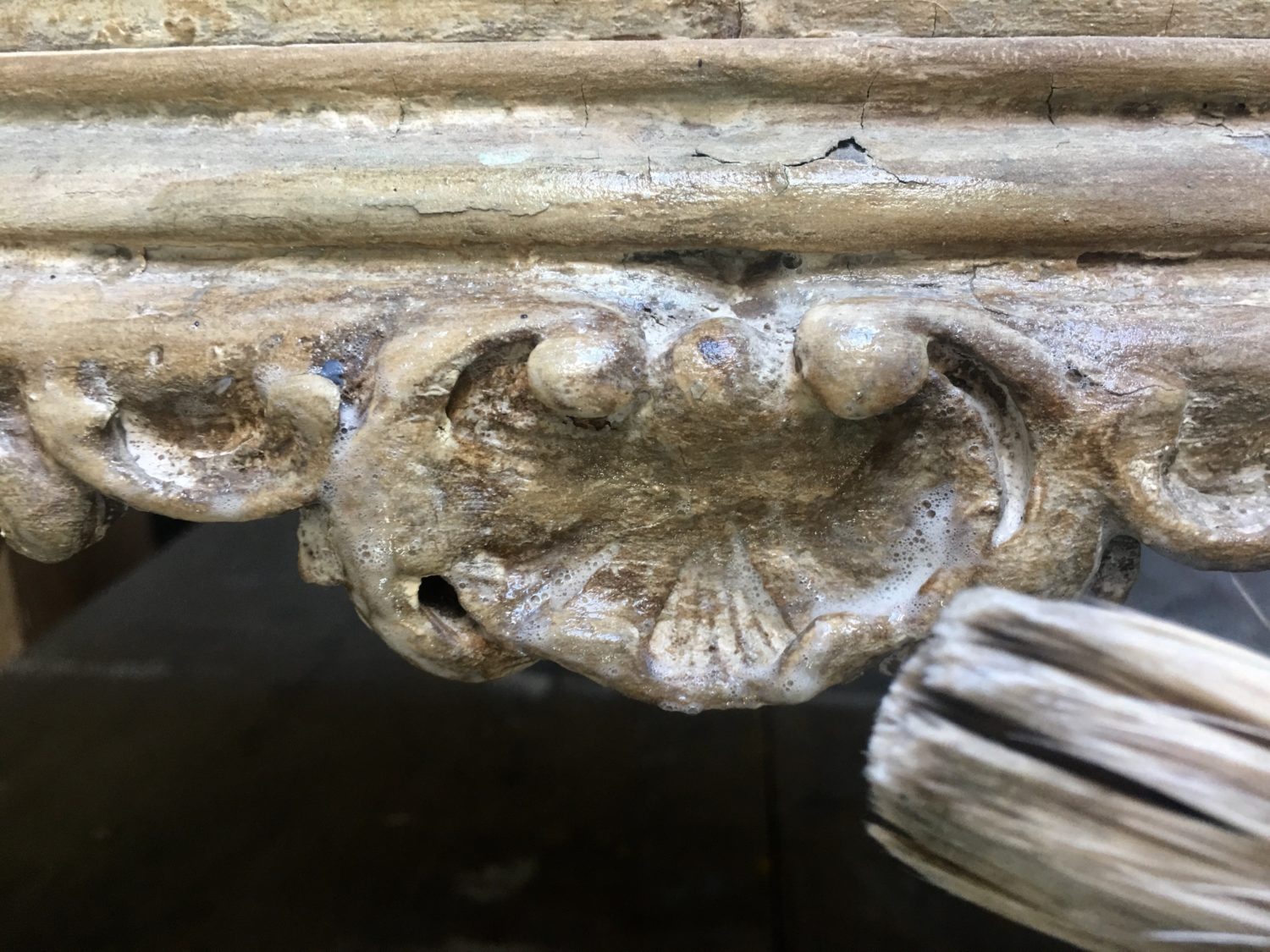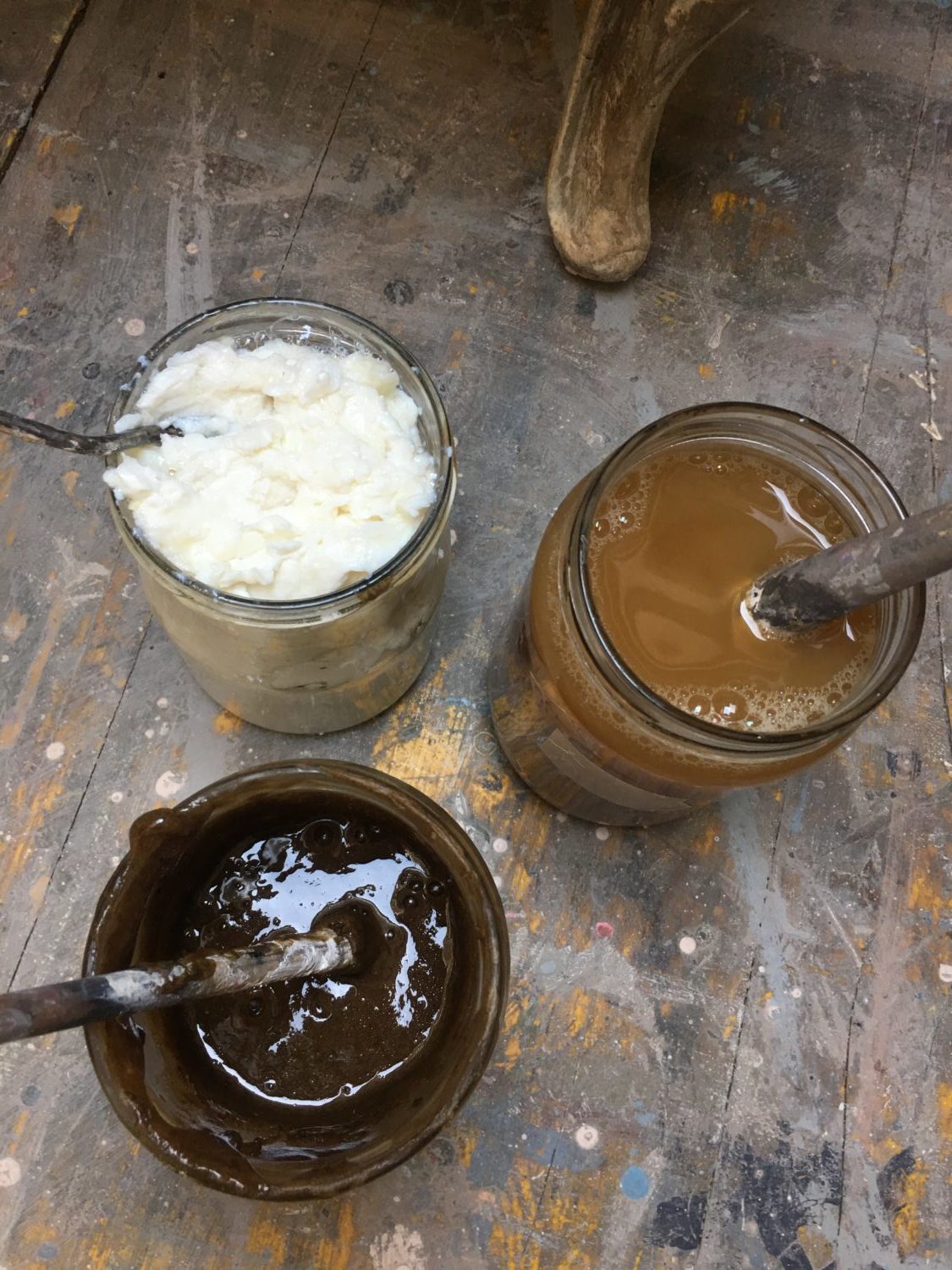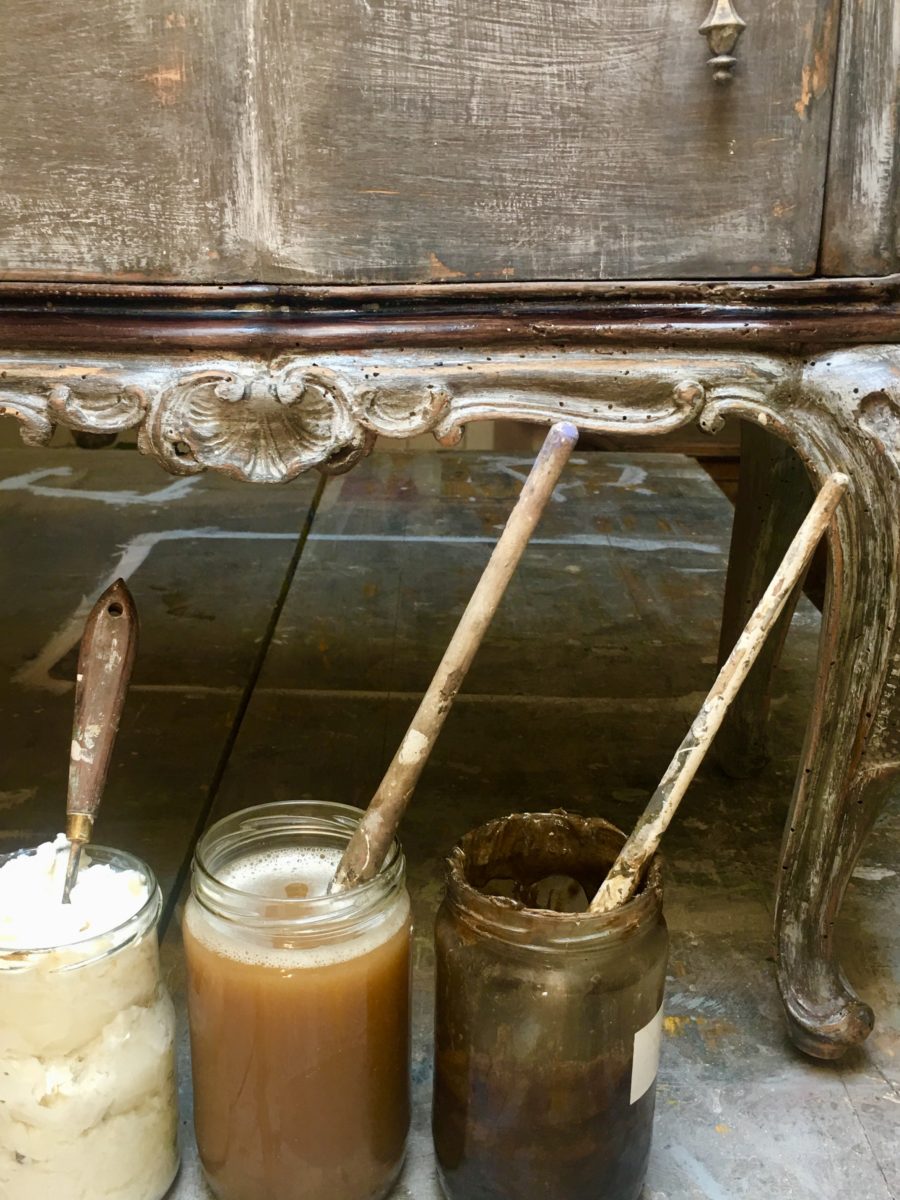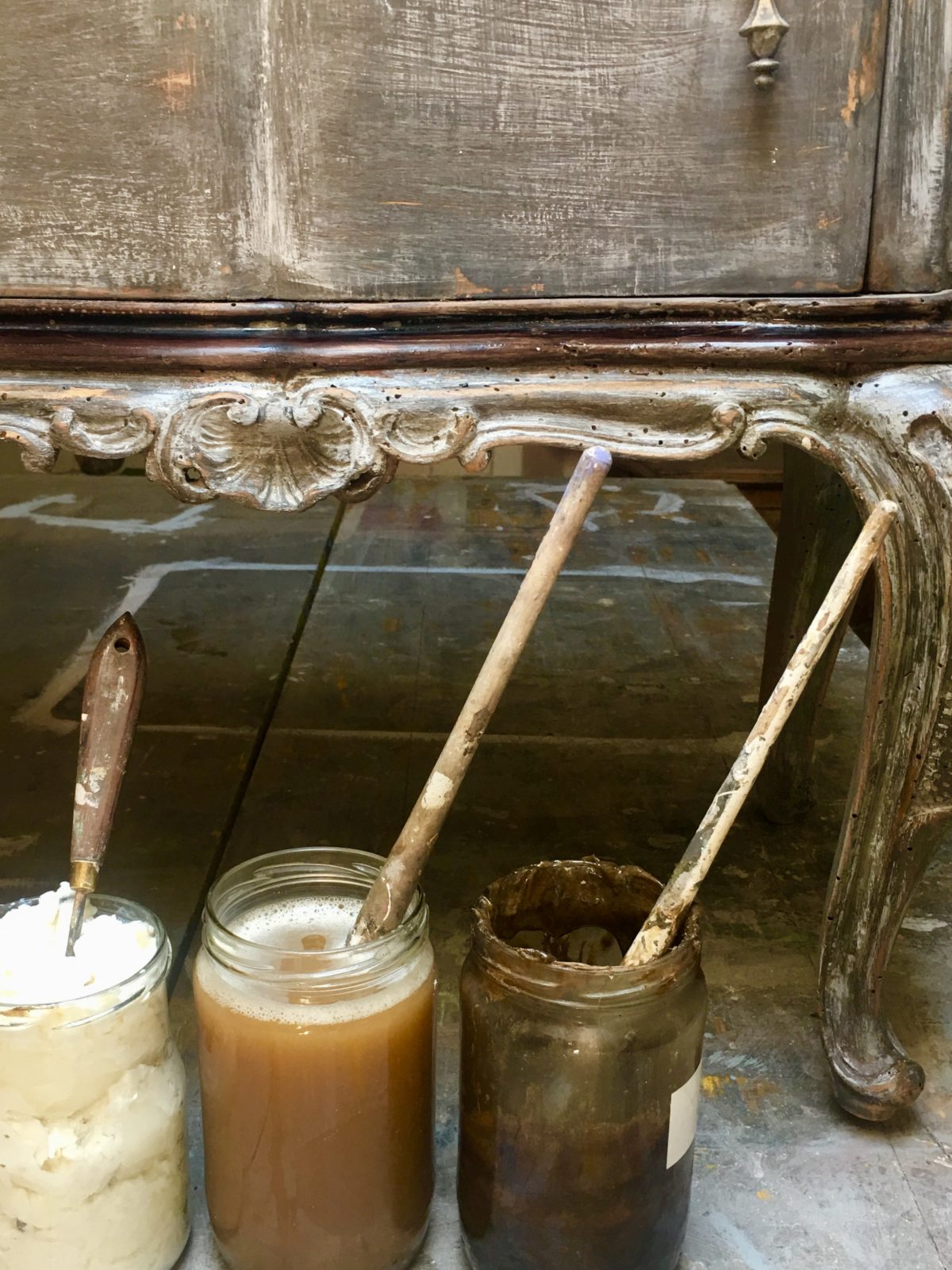
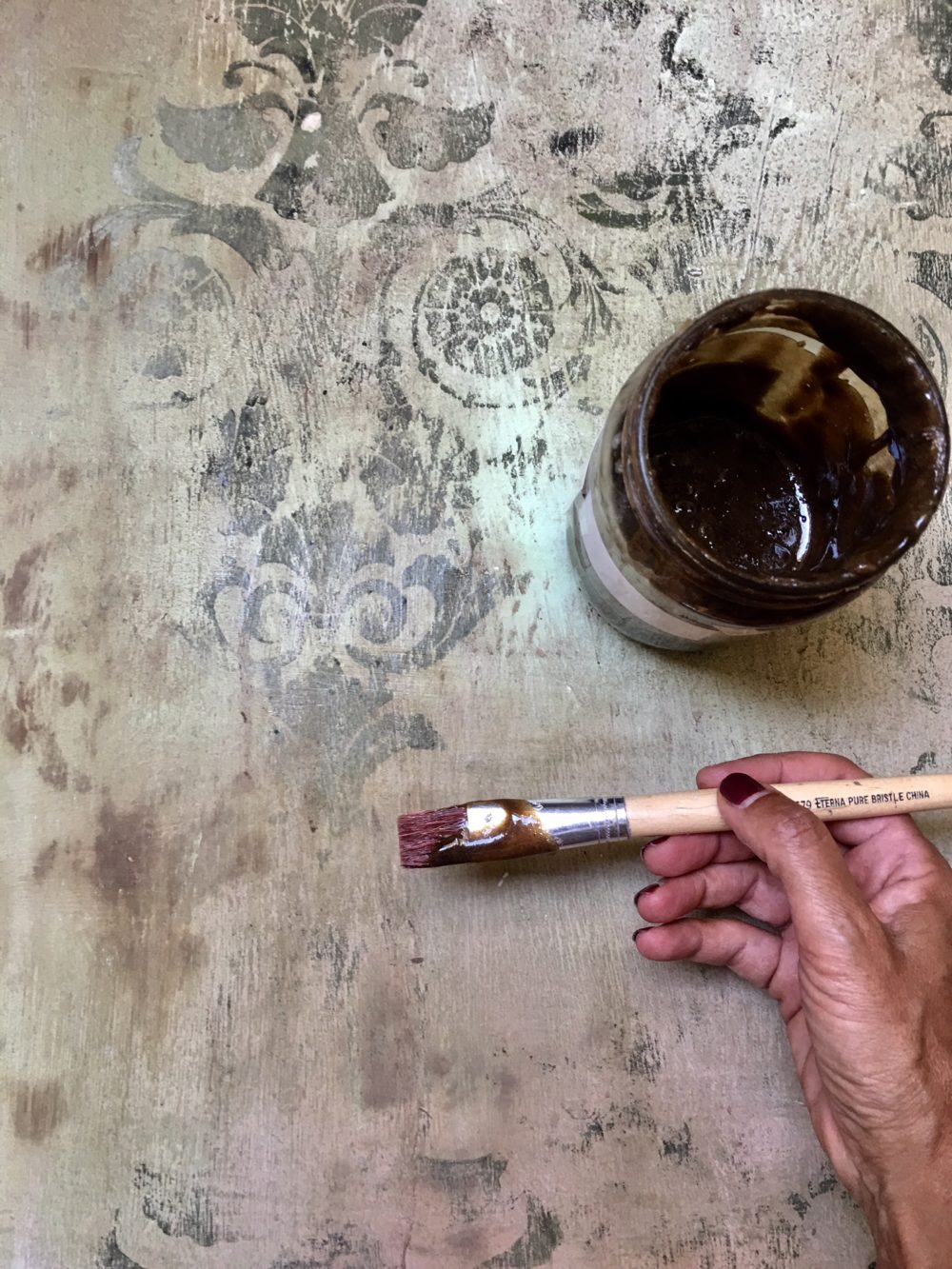
In my decoration courses on wood and plaster I mainly use natural elements. My courses are designed for those who want to approach the world of decoration as a beginner or for those who want to deepen what they already know in a professional way. At the base of all this the word Craft is fundamental. By craftsmanship I mean that you will learn to know and use individually the different products at your disposal and to combine them with each other. For products I mean: lime-based paints, water-based paints, natural and synthetic binders, pigments, concentrates, inert materials, etc. I think it is essential for those who want to produce objects or decorate walls and fabrics in a unique and personalized way to have the knowledge of what they are going to create. This is to increase one’s professionalism and to stand out from a production that too often is the same for everyone. The finish is a natural or synthetic product that is spread or sprayed for protective purposes on a specific surface previously worked. It is patina on wood, patina on wall, decoration on wood, on fabric or on wall. The protective agents can be: synthetic water-based or solvent-based protective products. Natural resins. Soaps. Natural waxes or petrochemical-derived waxes. Always consider that the laying of the protective is a passage of fundamental importance even if it is often underestimated. Important because it is almost always necessary to protect the surface treated by external agents. Humidity, steam, wear and tear, so the choice of protective or finish must take into account several factors. Furthermore, its application on a treated surface will slightly vary its texture and color. It can give three-dimensionality, darken or lighten the patina, opacify or polish the decoration … in short, many elements to consider and therefore it is essential to know the products and their reactions. In this post I will briefly talk about the protection carried out with soap. The soap that I mostly use is that of Marseille. I also use Aleppo and the Egyptian black one. I have to specify that compared to wax these finishes are weaker, meaning they are water-soluble and therefore do not protect walls and walls from moisture and water. They are therefore indicated on surfaces in sleeping areas, in transit areas or on furniture with limited wear (wardrobe in the living areas, walk-in areas, corridors, bedrooms, studios).
They are chosen as substitutes for other protective ones due to their particular velvety texture, almost as if the surfaces were woven. Moreover also for their characteristics of biodegradability and non-toxicity. In the images of this post you can see their consistency and their texture.
Marseille soap is the one that I use most on the wall for my choice. Use it neutral. I buy it in flakes and I work so as to obtain a soft and dense pasta. I apply it with a brush.
Aleppo soap based on olive oil and laurel oil, depending on its dilution is the most neutral finish. It has the characteristic of sustainably nourishing the surfaces and giving a unique softness to the touch.
Egyptian black soap is the most ‘obvious’ for its amber color. I use it when I want to give an aged look and color the surfaces with a light amber patina.
It too is very nutritious as it is based on natural oils. If you want to deepen your knowledge are available in my atelier of Villa Cremisi in the province of Sala Baganza for private lessons or group courses. I wait for you. Barbara
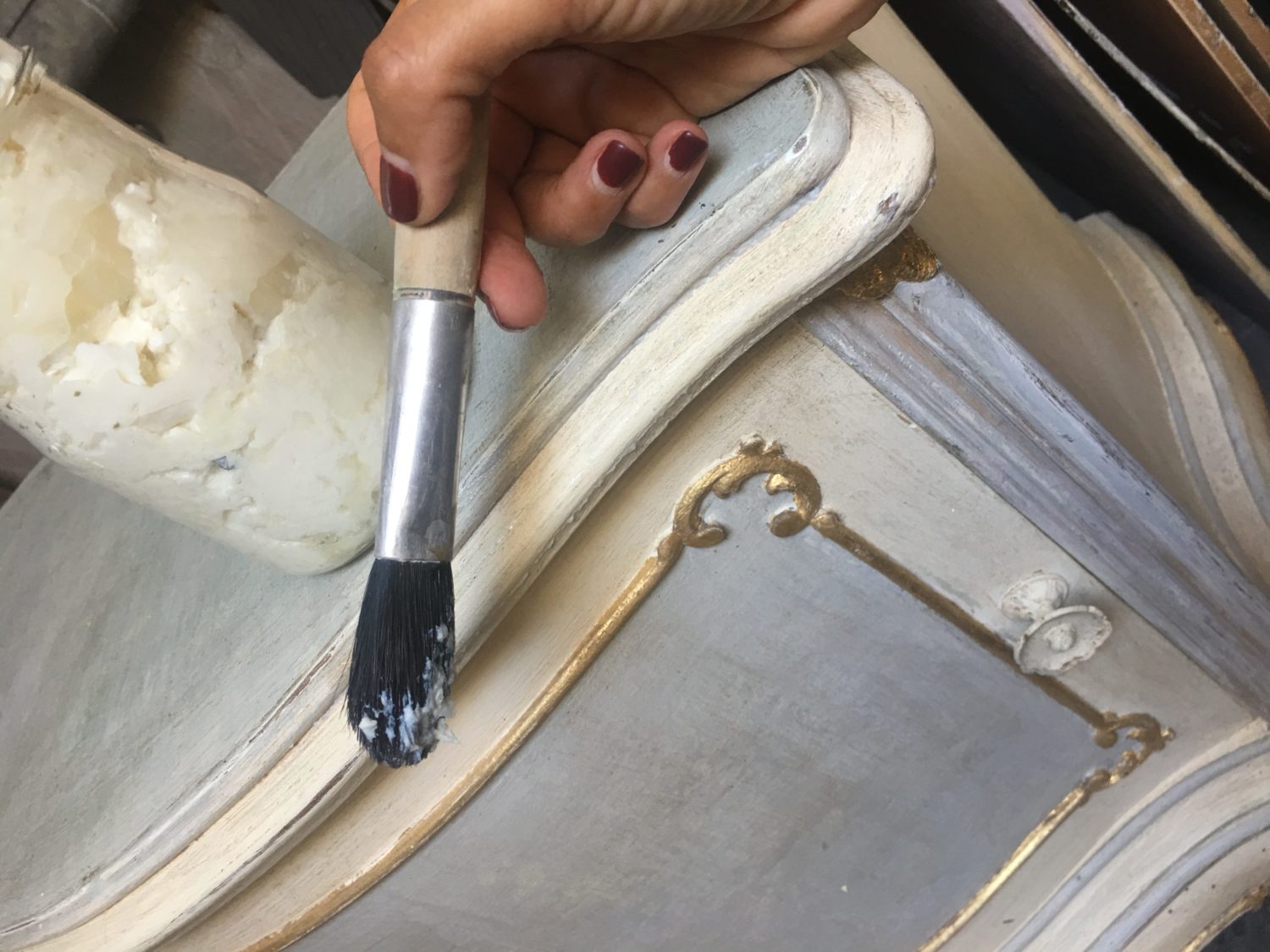
Patina shabby e sapone di Marsiglia
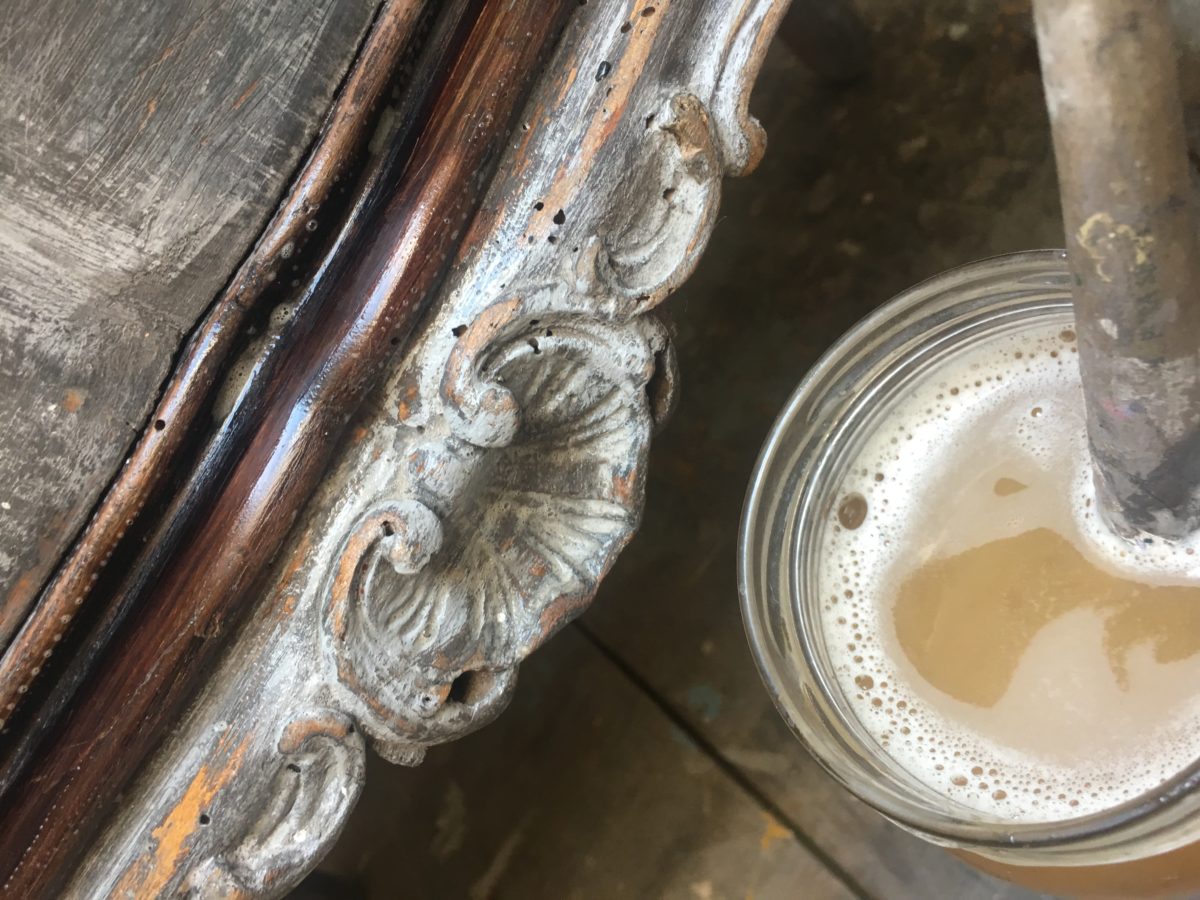
patina a calce e sapone Aleppo
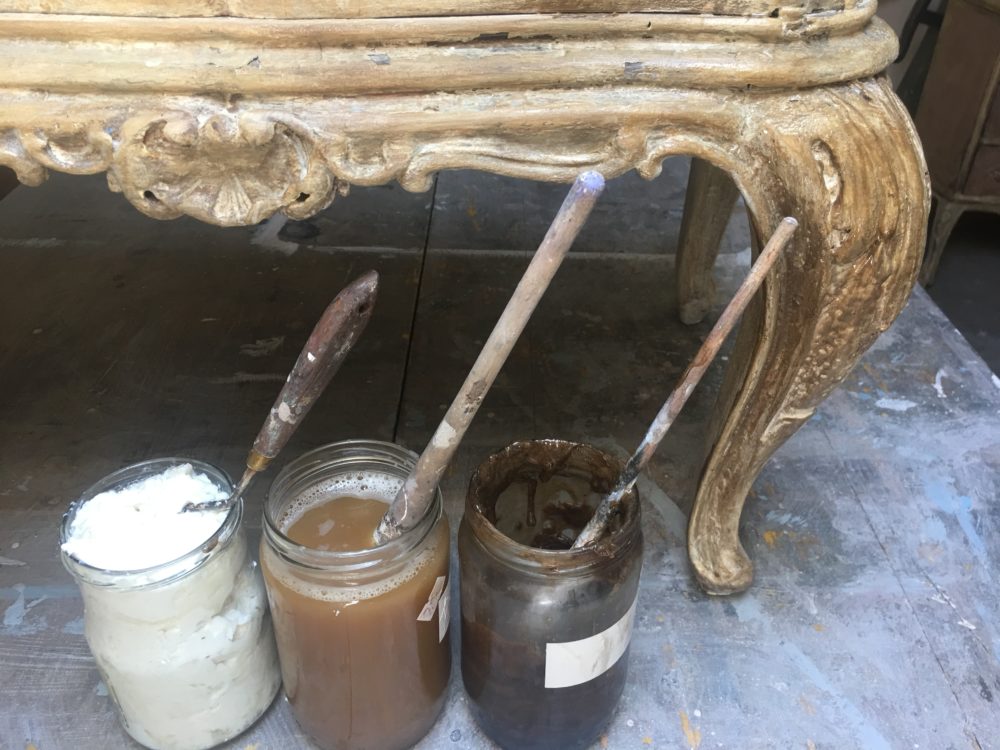
patina materica a caldo
